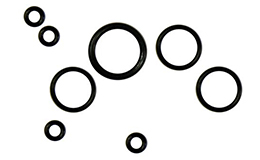home > News > How to judge whether the anti-wear hydraulic oil is damaged?

How to judge whether the anti-wear hydraulic oil is damaged?
The anti-wear hydraulic oil is the hydraulic medium used in the hydraulic system that uses the hydraulic pressure energy. It plays the role of energy transmission, anti-wear, system lubrication, anti-corrosion, anti-rust, and cooling in the hydraulic system. Anti-wear hydraulic oil is like human blood, providing energy to hydraulic equipment. The quality of anti-wear hydraulic oil not only affects the normal operation of engineering machinery, but also damages hydraulic system components. Therefore, we must always check the quality of the anti-wear hydraulic oil for our hydraulic equipment.
1. Identification of hydraulic oil moisture content
(1) Visual inspection method: If the oil is milky white and turbid, it means that the oil contains a lot of water.
(2) Combustion method: Dip a little oil to be tested with clean, dry cotton yarn or tissue paper, and then ignite it with fire. If you find a "crack" popping sound or flashing phenomenon, it means that the oil contains more water.
2. Identification of impurity content of hydraulic oil
(1) Sensory identification: There are obvious suspended metal particles in the oil, and the presence of fine particles can be directly felt when kneading with fingers; if there is a reflective flash point under light, it means that the hydraulic components have been severely worn; if A large amount of metal chips deposited on the bottom of the fuel tank indicates that the main oil pump or motor has been severely worn.
(2) Heating identification: For hydraulic oil with lower viscosity, it can be directly put into a clean and dry test tube to heat up. If sediment or suspended solids are found in the oil in the test tube, it means that the oil contains mechanical impurities.
(3) Filter paper identification: For anti-wear hydraulic oil with higher viscosity, it can be diluted with pure gasoline, and then filtered with clean filter paper. If a large amount of mechanical impurities (metal powder) are found on the filter paper, it means that the hydraulic components have been severely worn.
(4) Sound identification: If the entire hydraulic system has large and intermittent noise and vibration, and the main oil pump makes a “buzzing” sound, or even the phenomenon of “crawling” of the piston rod, observe the oil tank liquid level at this time. A lot of bubbles will be found at the exit of the tubing or the transparent level gauge. This situation shows that the anti-wear hydraulic oil has been immersed in a large amount of air.
3. Identification of the performance of hydraulic oil
Identification of the oil in the fuel tank: take out a small amount of the tested oil from the fuel tank and filter it with filter paper. If there is a black residue on the filter paper and a pungent odor, it means that the oil has been oxidized and deteriorated. It can also be taken directly from the tank Take out part of the sedimentation sludge from the bottom. If you find a lot of asphalt and gum deposits in it, place it on your fingers and knead it. If you feel that there are many gums and strong adhesion, it means that the oil has deteriorated due to oxidation.
The condition of anti-wear hydraulic oil directly affects the health of your hydraulic equipment. Once there is a problem with the anti-wear hydraulic oil, the service life of the hydraulic equipment will be greatly shortened. So when your hydraulic oil has the above problems, remember to replace it immediately.